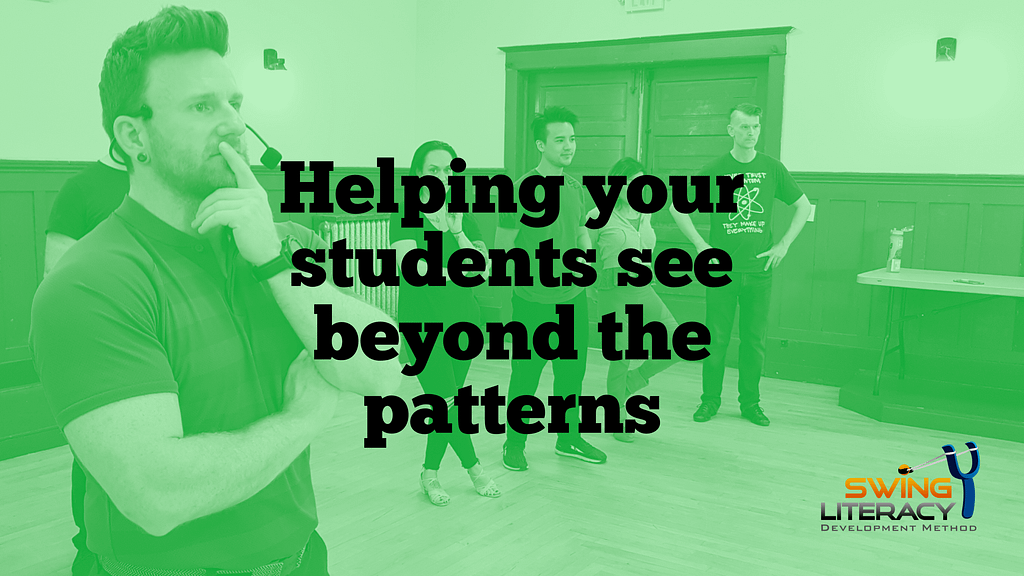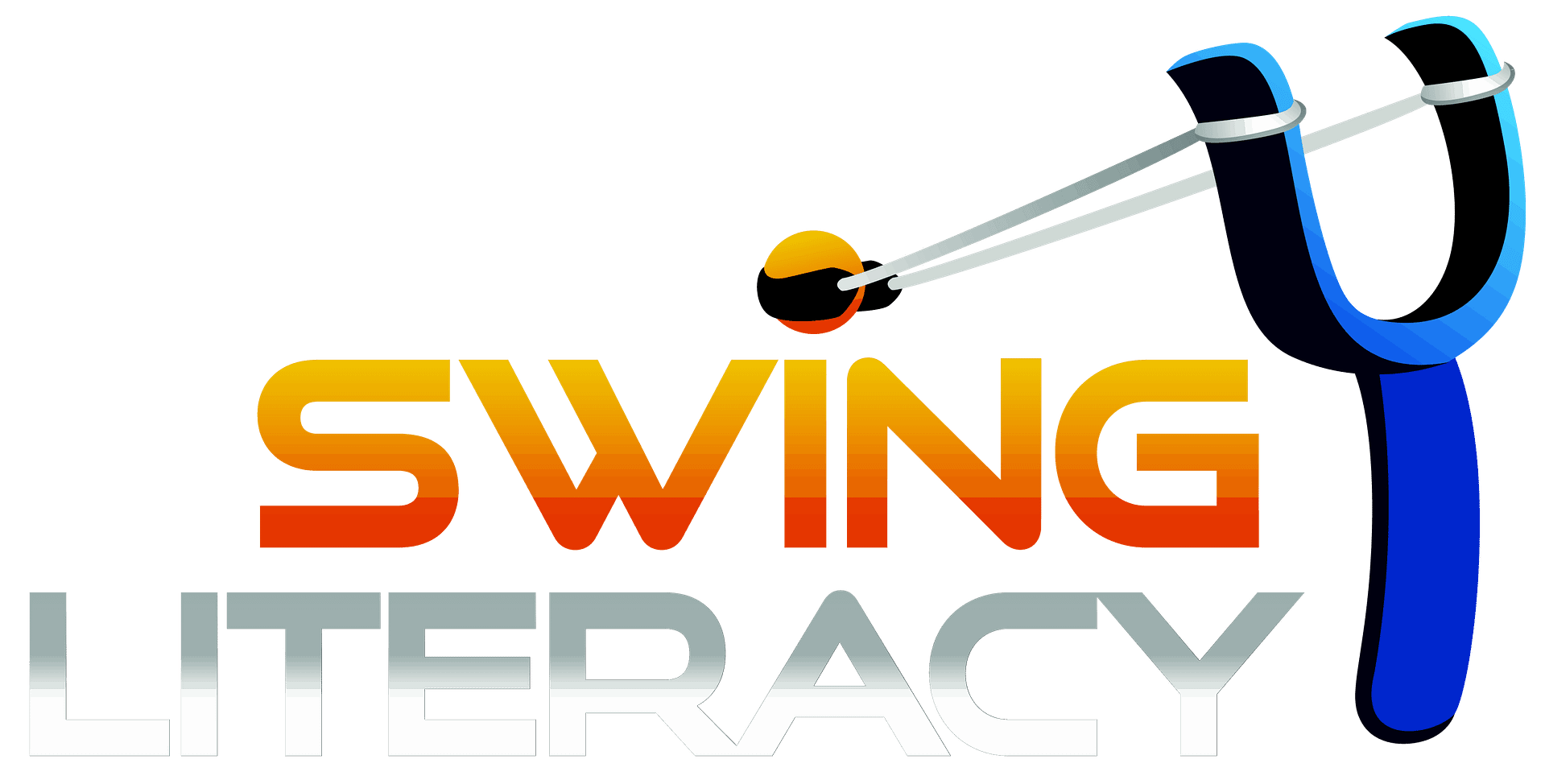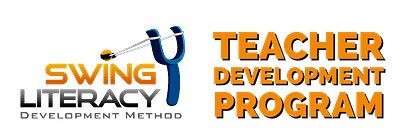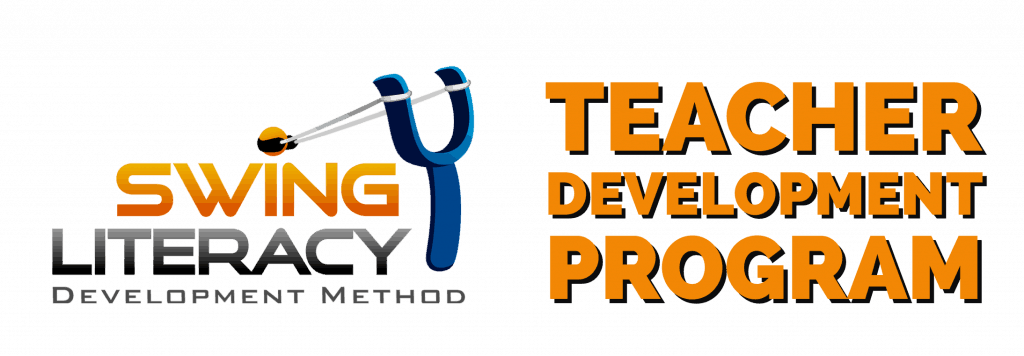No products in the cart.

Helping your students see beyond the patterns
Reading Time: minutes remaining

Your struggle
Your students seem to be hungry and motivated to progress, but they whine and moan when you try to teach them technique. They either get overwhelmed and intimidated, or they get impatient, waiting for you to hurry up and get to the next pattern. They think that improving their dancing is all about improving their patterns.
Sound familiar?
So how do we change that?
Quick story
I was teaching a new private lesson student last weekend. “Joe” explained to me that he had “broken up with WCS and gotten back together several times” over the last decade or so. He said felt frustrated that no matter how much time and effort he put into his dance, he wasn’t improving his look or his feel.
He’s now back to give it another shot and is willing to put in the work. He just recently got into Intermediate and wanted to work on “perfecting his basics”.
I asked him what he meant by that, and he said, “You know, I want you to give me the BEST passes, BEST whips, BEST pushes…”
I stopped him. “Ok first, I need you to consider that what you are describing are basic patterns, but there’s more to basics than patterns. There are these things called basic skills that make them look good and work properly.”
Joe looked confused. So I prompted him.
“So, when you watch a leader you admire, and you like his Under Arm Turn, what are you looking at?”
He answered, “His arm position, the way he moves his feet, his body shape…”
I said, “Yeah, those are all skills. You need to learn them independently. Have you ever done that?”
Joe shook his head.
“It’s the skills that make you look and feel like a dancer, not the patterns. Skills keep you in love with the dance“
He nodded, almost salivating.
“I’m going to make sure that if you ever break up with WCS again, it will be because of life reasons, not because the dance let you down.”
Takeaway Teaching Tips
- At every stage of their development, students should be taught the value of skills and their relationship to patterns, to prevent them from becoming pattern junkies. Prioritize, recognize, and celebrate skill learning by making it a part of your syllabus and assessment processes. Right from Day 1.
- Overwhelm is real. Many teachers know that techniques are important, so they have great intentions by trying to teach techniques, but end up teaching them out of order, before the student is actually ready to absorb and use them, resulting in frustration or overwhelm. What students need is for teachers to train in how to teach the primary, fundamental pre-requisites to other techniques and patterns, then how to layer them into a growth spiral throughout the student's journey.
- If you don’t want students to think technique is boring, don’t teach it boringly! Use games and gimmicks to make skills memorable and fun. Use conversational language to make the topic of skills more accessible and unintimidating. With the right pedagogy, you shouldn’t need to “sneak the technique in”; you should be able to be transparent with your students and reveal the techniques required every step of the way.
What's the result?
We use these strategies ourselves and train teachers exactly how to use these strategies in their local classes. As a result:
- Brand new dancers have better connection on their first day than dancers who have learned elsewhere for several months
- 80% retention rate from the Intro class series to the next level because they are having more success and having more fun
- As they progress to higher levels, these dancers are curious and hungry for technique because they value it as much as if not more than patterns
- The foundational technique they learned makes learning harder skills much easier, so they learn them faster, which reinforces the value of technique learning.
- They develop a more positive attitude toward their own learning, and know exactly what to ask for when they are confused or stuck.
But the broad strategies above do not explain to teachers how to implement them in their classes. Don't worry - this is exactly what you can find inside the Swing Literacy Teacher Development program.

Teachers: learn exactly how
Learning how to teach skills is different from learning how to dance. In order to teach skills effectively and efficiently, this requires training that goes beyond pattern breakdowns and class management.
Wondering what skills to teach your students, in what order, and how to teach them in a way is engaging, addictive, and un-boring?
We dive deep into this (and much more) in our training:
As the source of R&D for teaching WCS, we produce curated resources, live trainings, and digital courses to help teachers teach West Coast Swing in the most effective way possible so their students learn faster, better, and easier.


 Your struggle
Your struggle Take it to the next level
Take it to the next level